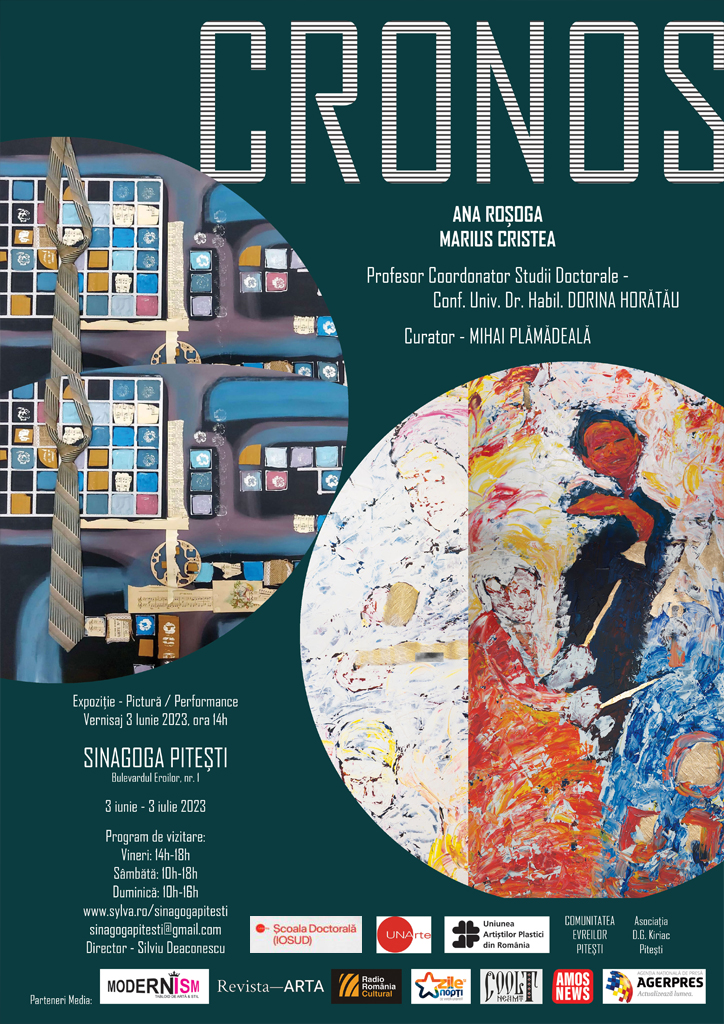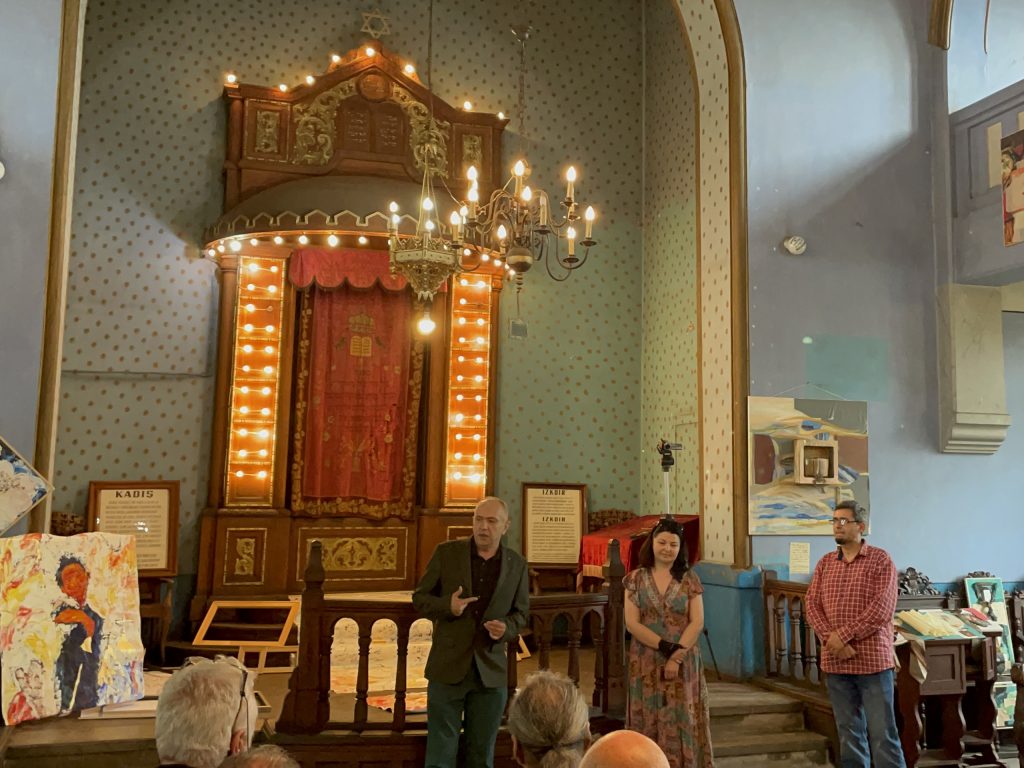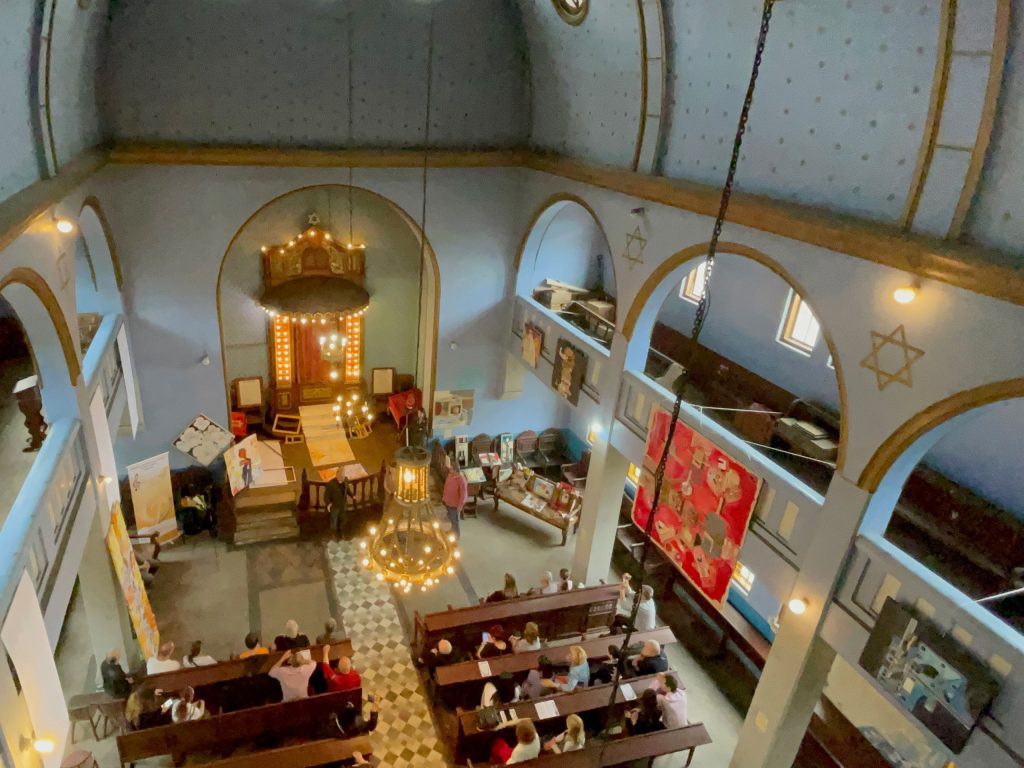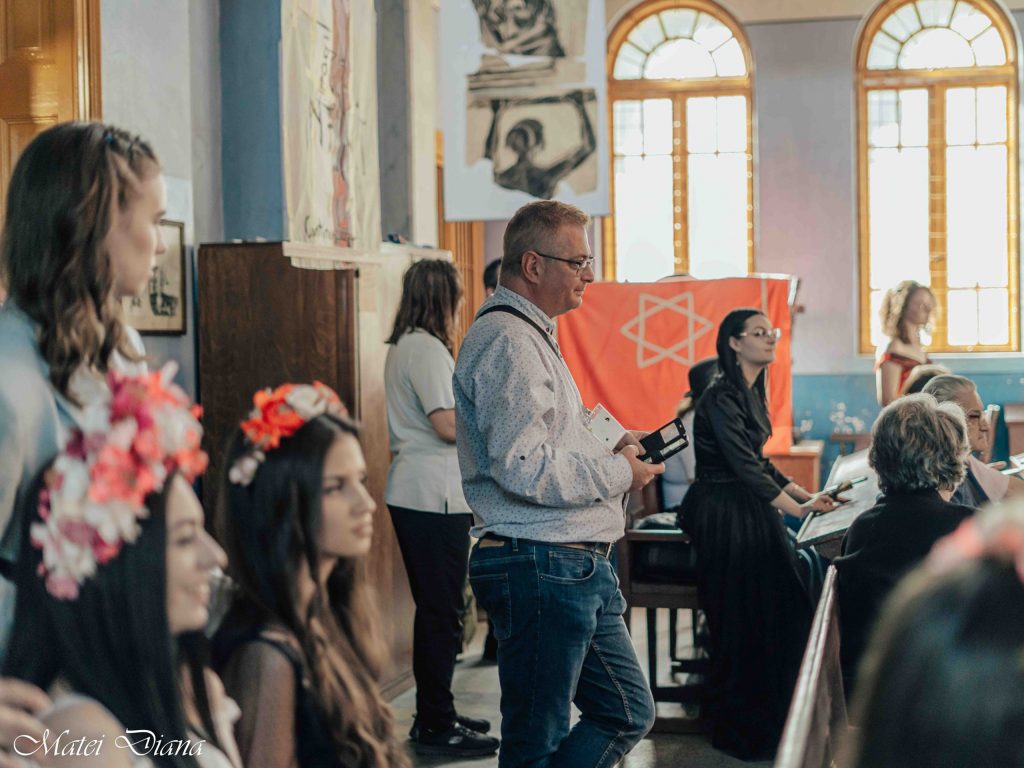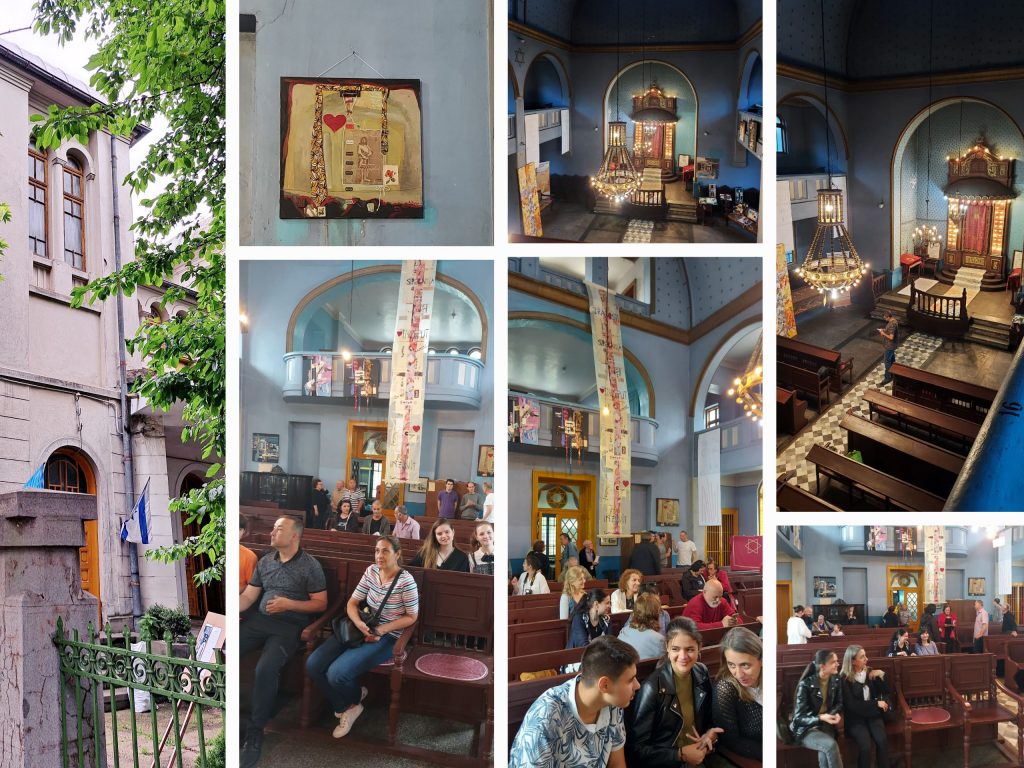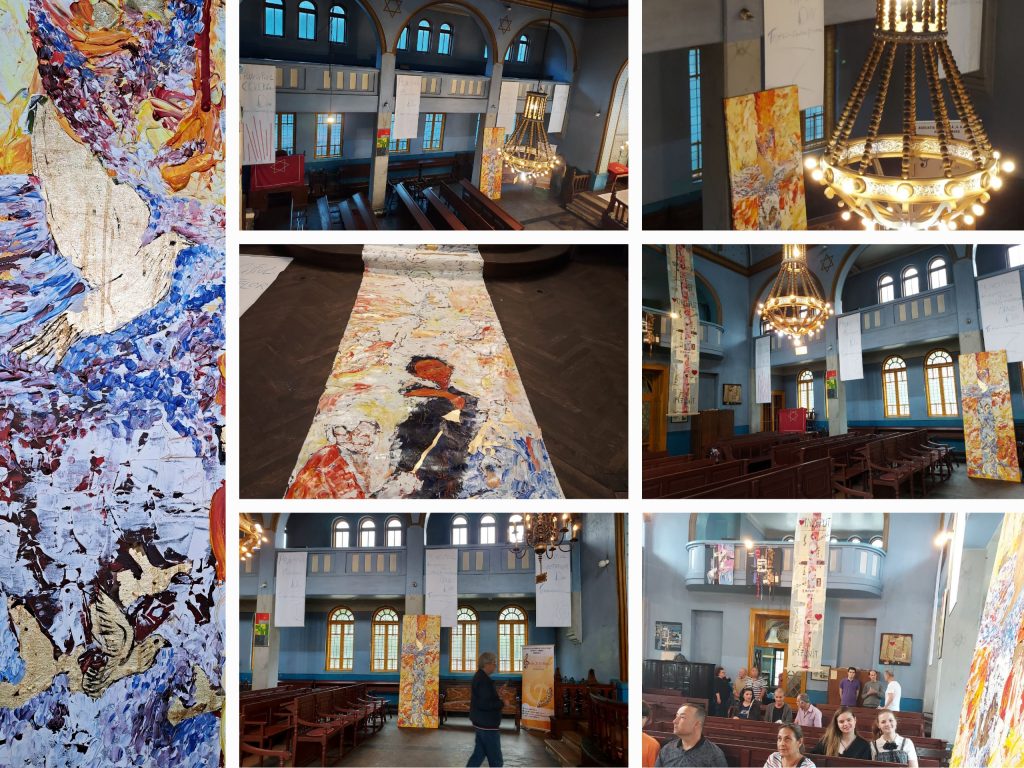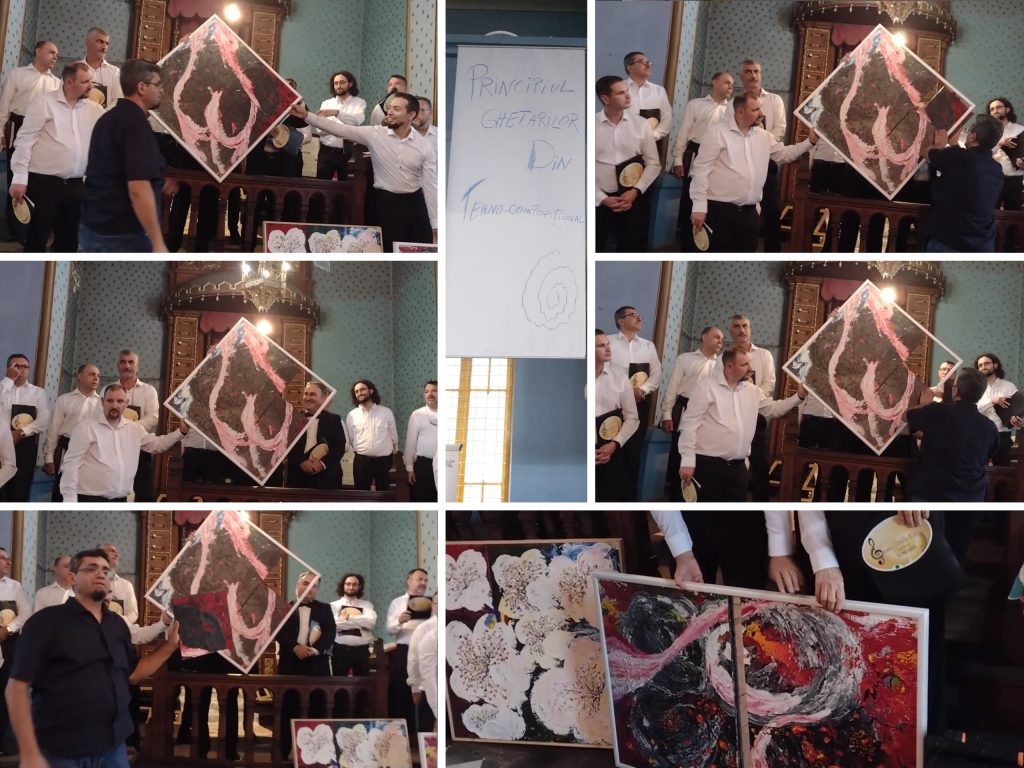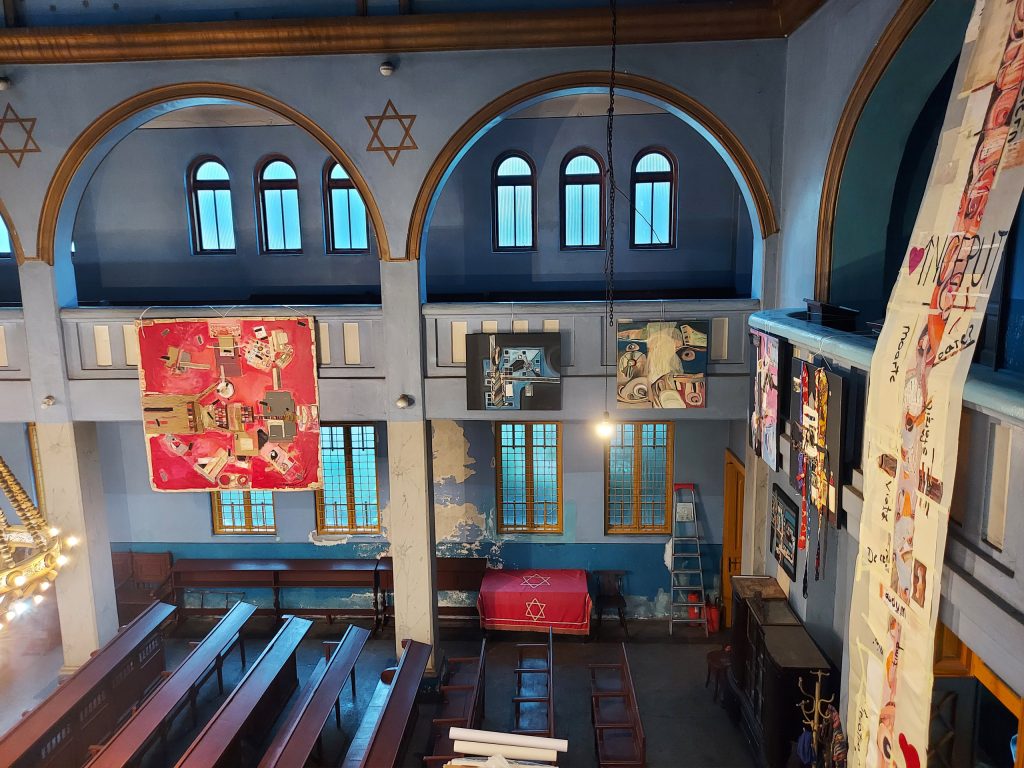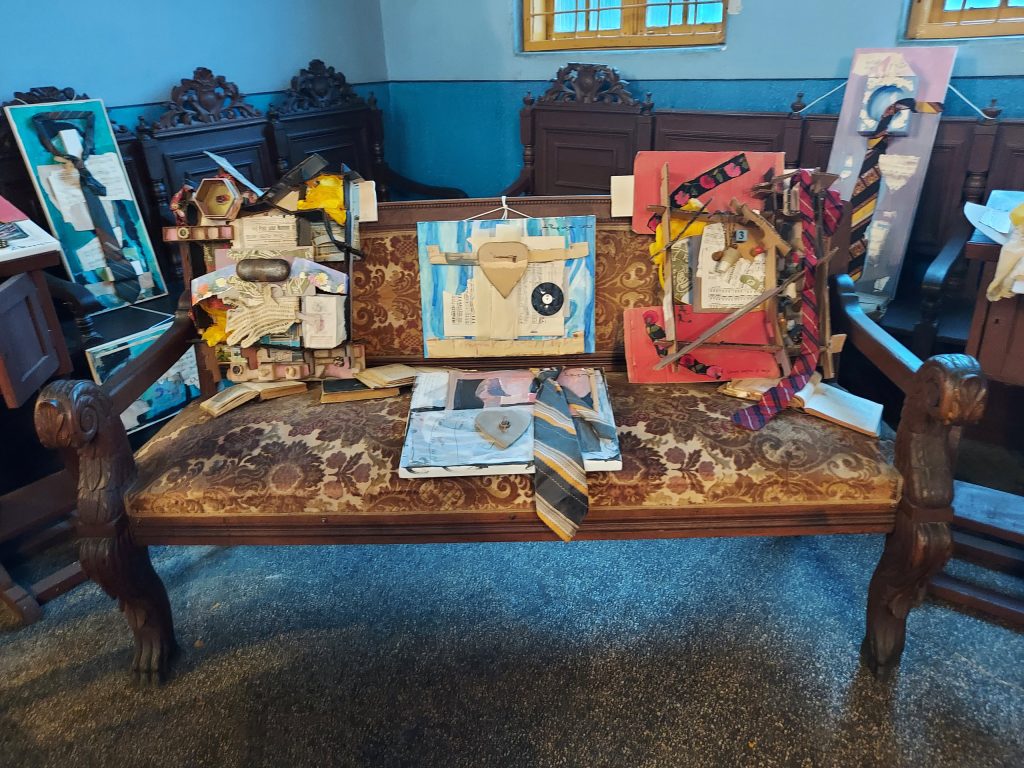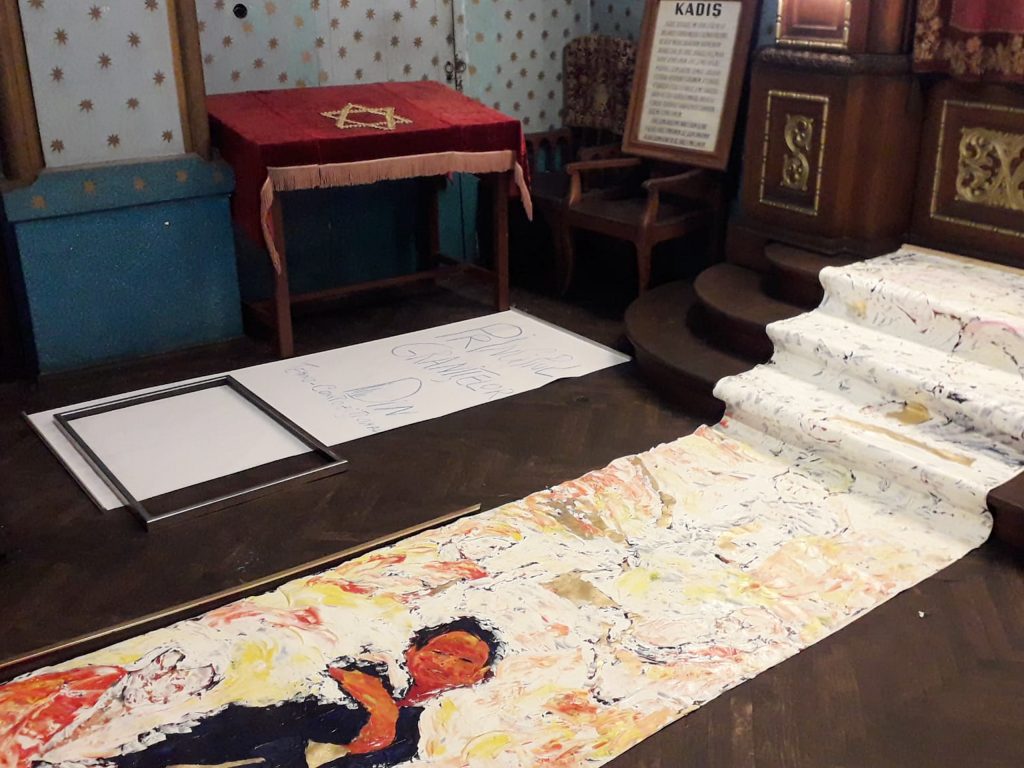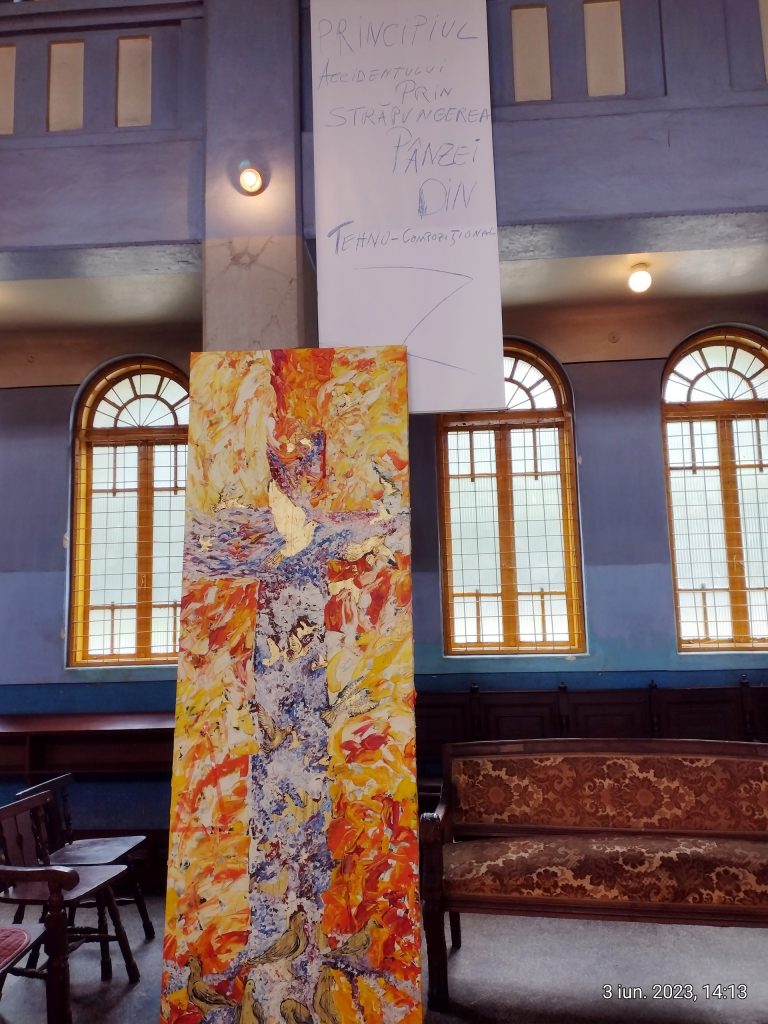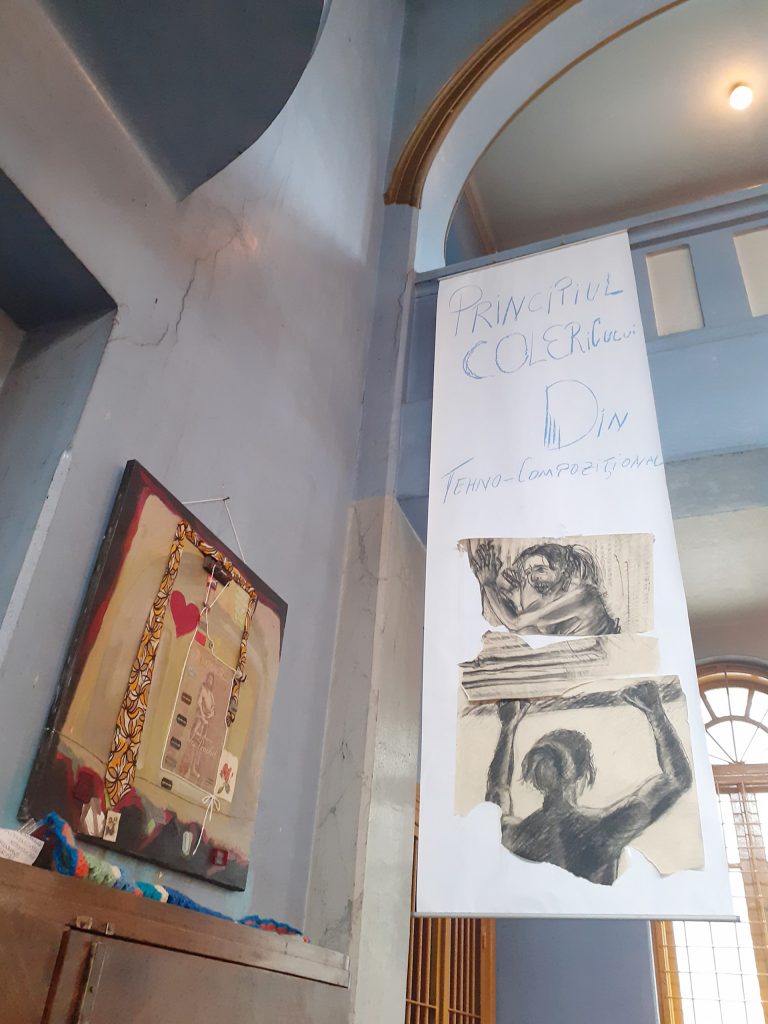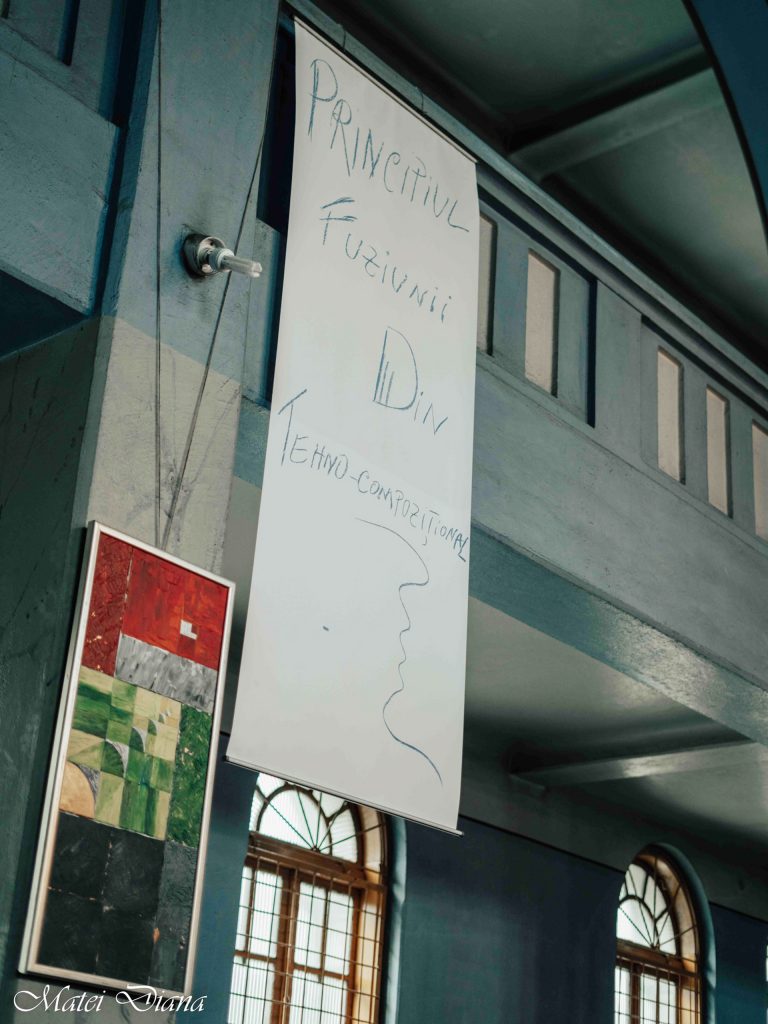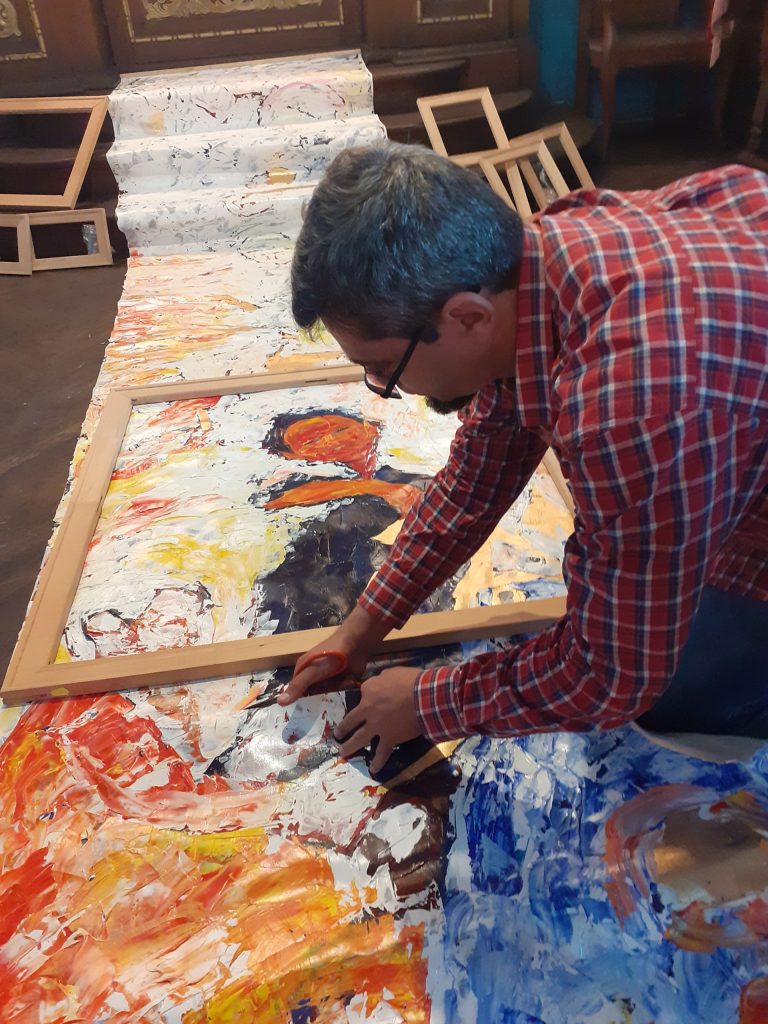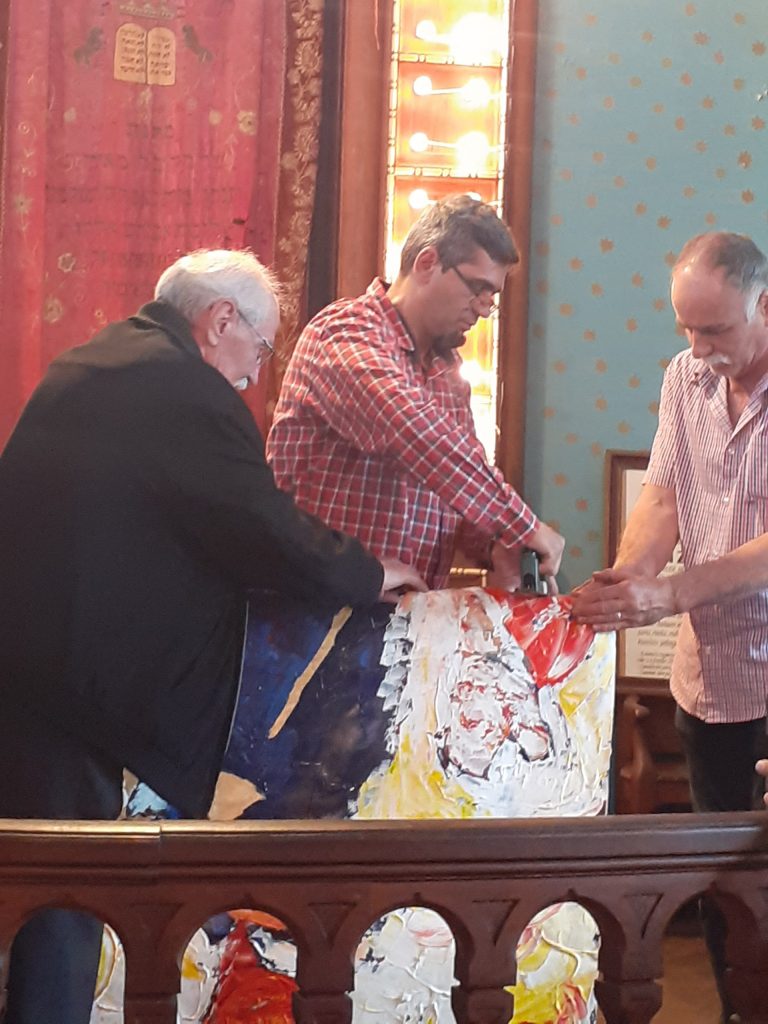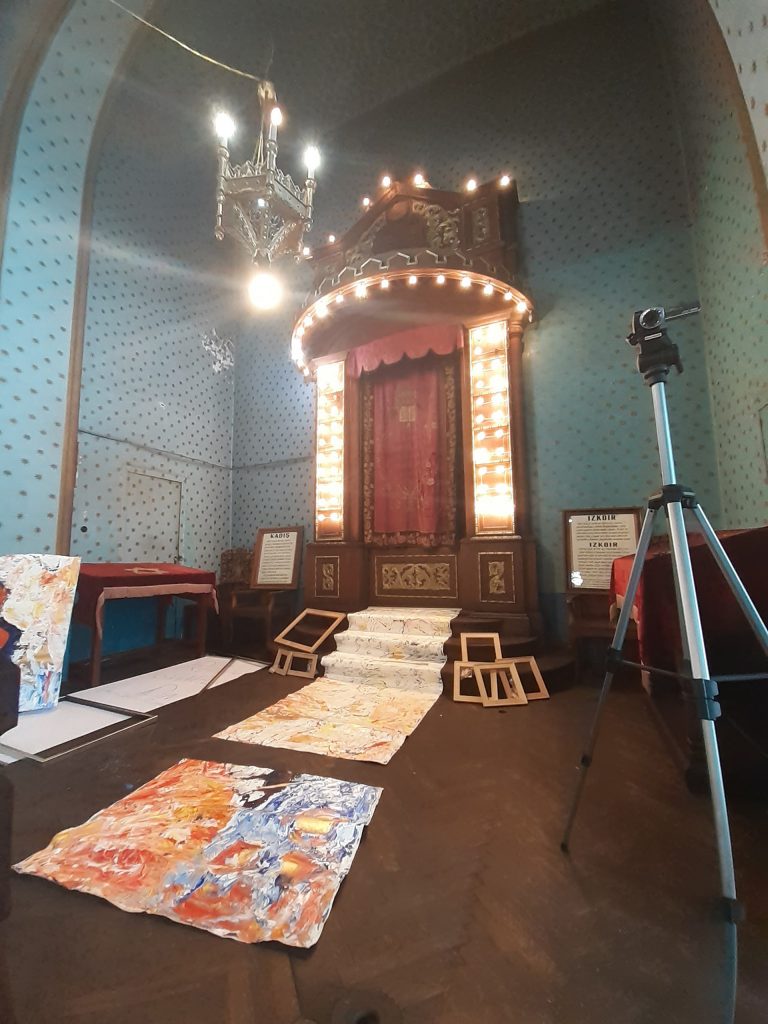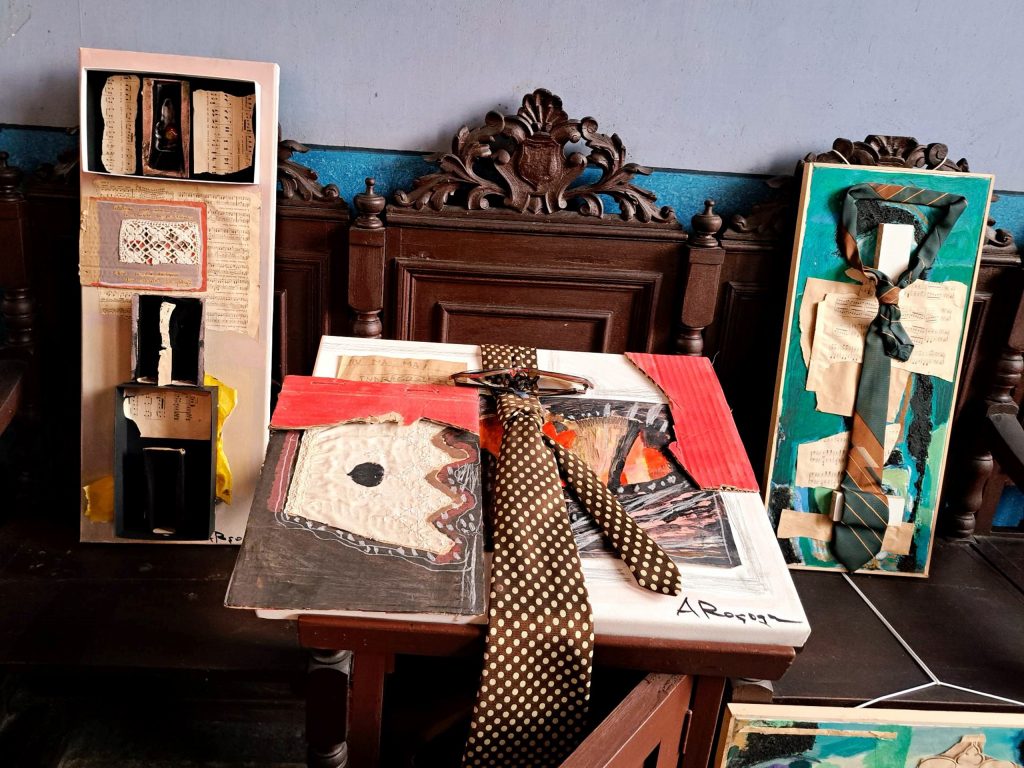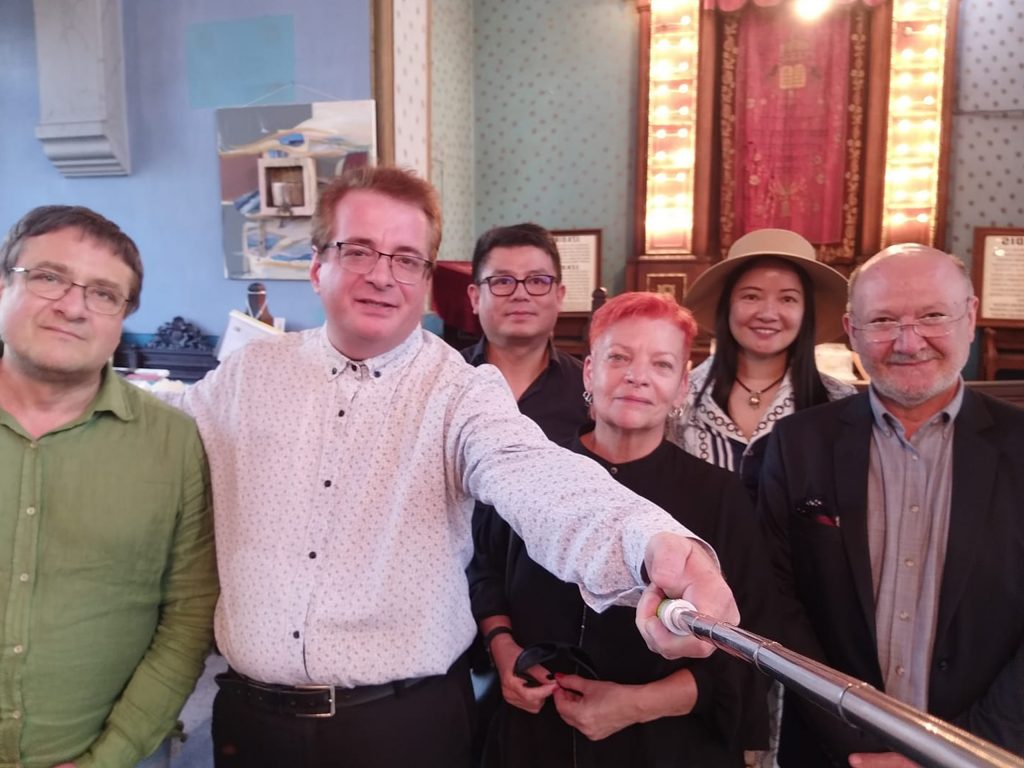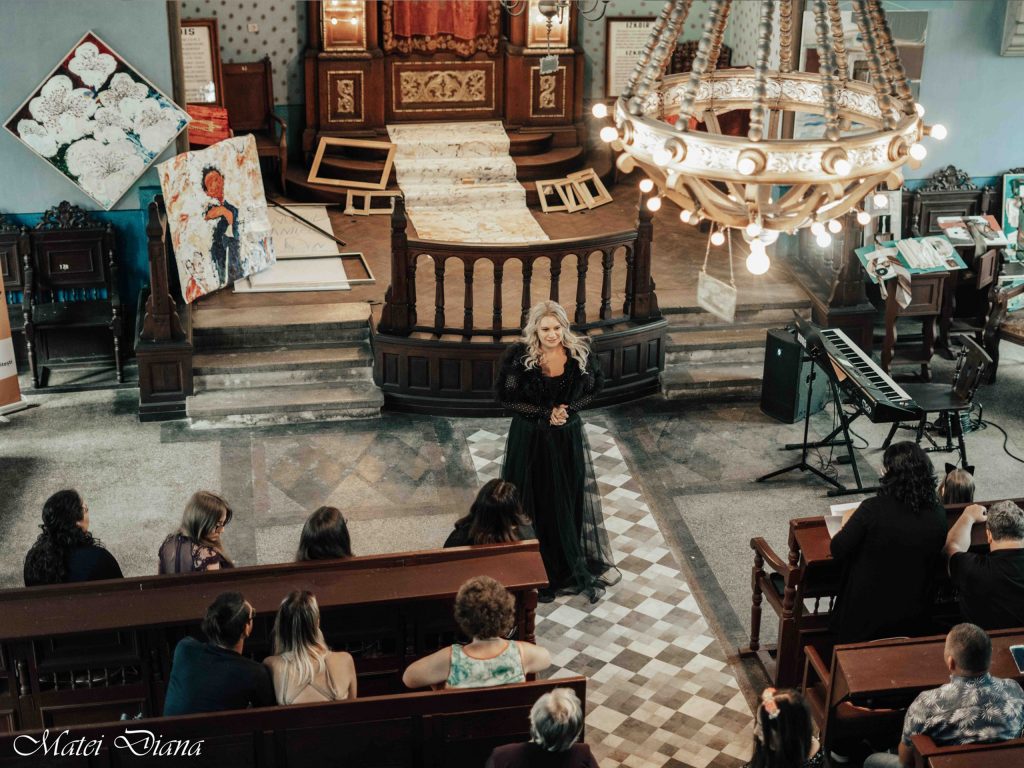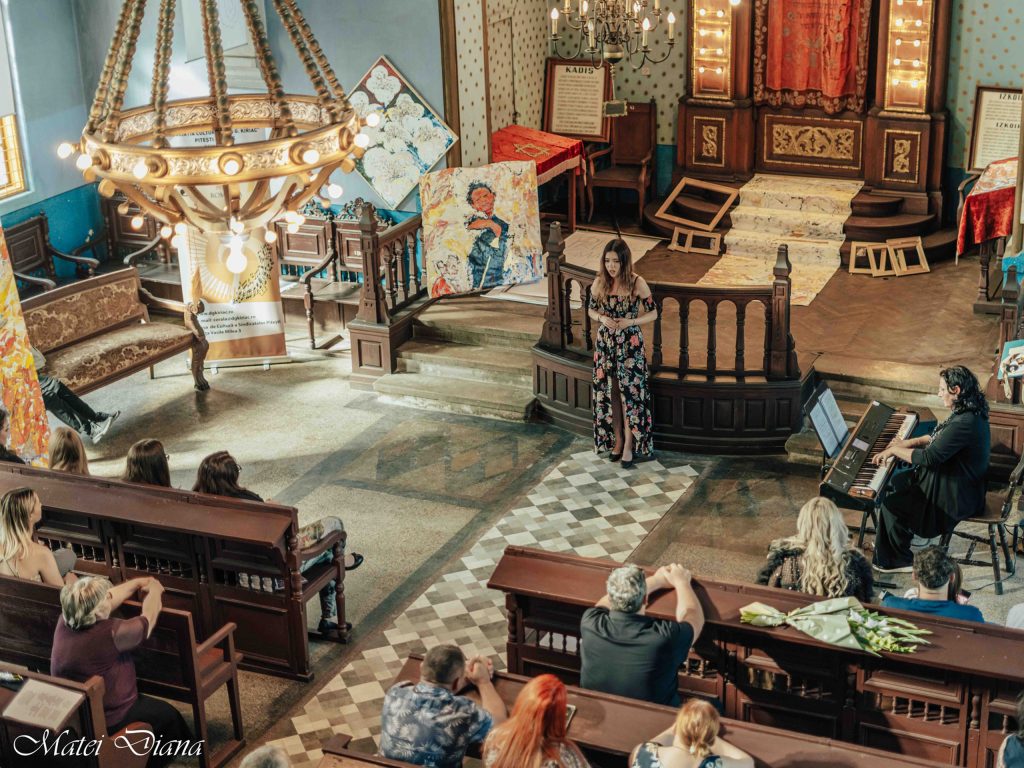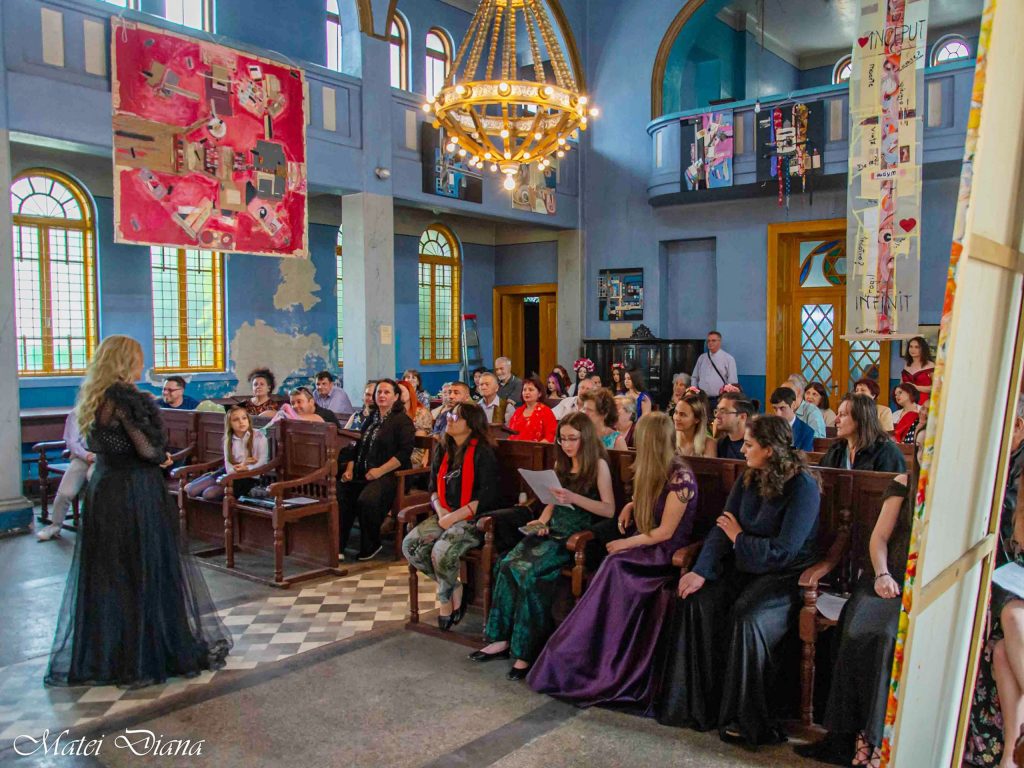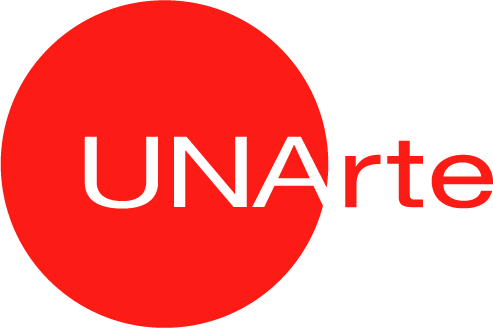The common denominator of the project proposed by the two artists, as the chosen title suggests, is time. Beyond the theme, Ana Roșoga’s artworks (PhD student, 1st year) are based on the use of pre-existing objects, particularly found objects, reconfigured in collages and installations where taking over meanings, recycling and intentional modification of fragments lead to both new and surprising results. The decontextualization and recontextualization of objects or fragments involve both the use of their visual qualities (colours, textures, shapes or images of a decorative or informational character), as well as the speculation of the utilitarian or cultural meanings they originally had. Here comes “the game time” in the creation of Ana Roșoga. In a collage, the grandfather’s tie appears as a visual sign, but it also emphasizes the idea that what was once a piece of clothing becomes in a work of art just a textile, with an exclusively visual function. In other of her artworks, beyond the embedded images, the postcards are reminiscent of times and places, being practically messages from the past. The fragments of the scores rhythms, also “hatch” certain parts of various artworks, but link to the time when they were composed, edited and in which they were read by performers until they became unusable. Ana Roșoga intervenes moderately on the fragments in her collages, which turns them into picto-objects, removing them from the classic readymade, if we admit that there is such a classification. The artist counterbalanced the works made by collage with so-called simple paintings, in oil or acrylic on canvas.
Marius Cristea (PhD student, 1st year) supported a performance (called “Time after Time”), in which he operated a suite of irreversible interventions on an important painting in his creation, a work of no less than six square meters. In this way, after years of work, events in which it has been exposed (previously displayed in a personal exhibition organized at the Romanian Academy) and waiting, transformed into fragments, the painting acquired a new form of existence. The artwork cut by Marius Cristea and transformed into several paintings, by fixing parts of it on various frames, however great the loss of material, it’s not an easy job, in no case one that was created for this purpose. Marius Cristea’s painting, especially when working in medium and large dimensions, has its anchors in figurative, but it develops as a chromatic abstraction and has modular solutions, with strong decorative references. Figurative visual signs, “hidden” among often gesturalist touches, usually portraits, avian, floral, cruciform or esoteric motifs, are organically integrated into the field of the artworks, signaling their presence concisely, but discreet. For the purposes of the above analysis, the number of parts, related cuts and routes followed by the cutter blade were thoroughly premeditated. The artist, beyond the fact that he knows best how, what and why he worked on the original canvas, also knows exactly where he wants to go. In order to avoid possible errors, because of instinct or automatic dictation, he made rigorous documentation regarding the dimensions of the resulting fragments, the frames, the golden ratio, in relation to the new dimensions and last but not least, to the losses of the material and with them, of the image itself. Documentation is a part of the performance and of the whole project.
By associating their artistic work, materialized in artworks, with the unconventional space and with the performance, Ana Roșoga and Marius Cristea are part of the concept of social sculpture, theorized since the ’70s by the same Beuys, still relevant today.

